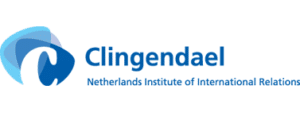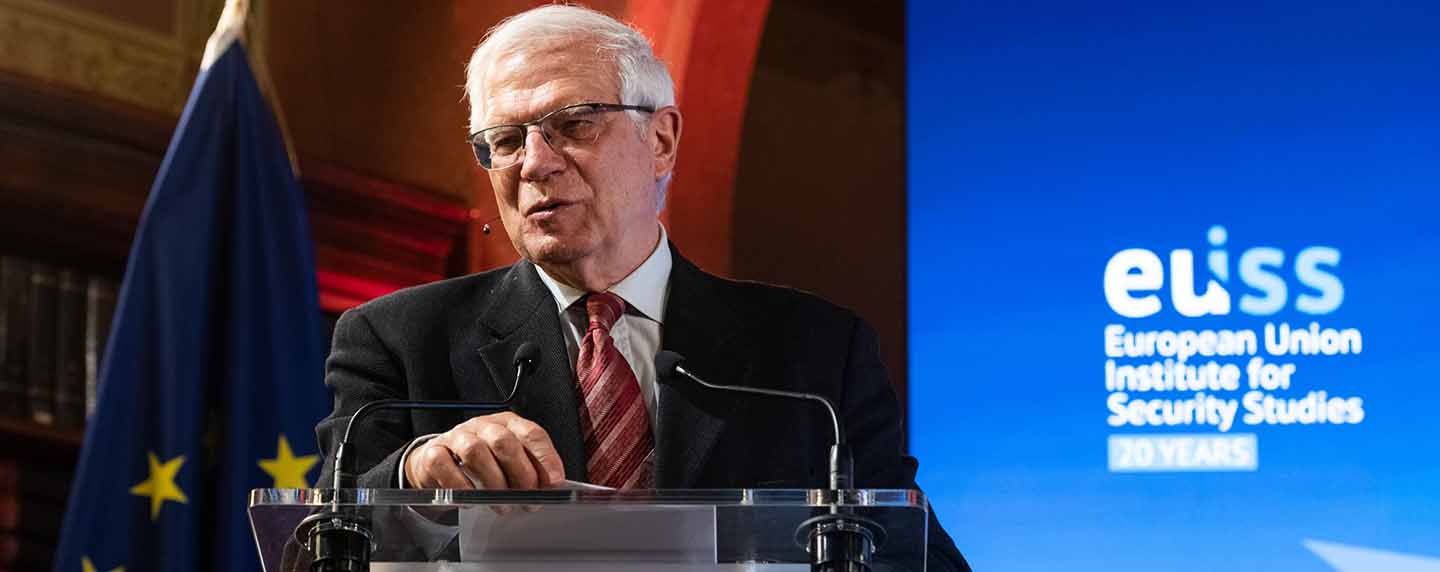In partnership with:

Summary
The prioritisation by the US of the Indo-Pacific theatre and of competition with China, Russian revisionism and the growing volatility in Europe’s southern neighbourhood call for greater European responsibility in the areas of security and defence. In line with the Spanish-Dutch concept of an ‘open strategic autonomy’, this brief outlines a vision that bridges greater European responsibility with transatlantic cohesion in security and defence. We aim to transcend institutional debates about the EU vs NATO and reflect on what greater European autonomy might mean in the context of three strategic priorities: deterrence, stability and a forward maritime presence. We recognise the need to prioritise security challenges in Europe and its immediate vicinity (ie, through deterrence and stability), not least in light of the evolving security situation in Eastern Europe. However, we also call on Spain and the Netherlands to step up their cooperation in the maritime domain to strengthen Europe’s maritime presence beyond its immediate neighbourhood, most notably in the Indo-Pacific.
Analysis
A changing strategic environment
The Spanish-Dutch non-paper on open strategic autonomy outlines a vision ‘on the need for the EU and its Member States to have the capacity to take and implement autonomous decisions, preferably in coordination with its global partners, but without being compromised by one-sided dependencies’.[1] Spain and the Netherlands, two maritime nations sitting on Europe’s Atlantic façade, are the EU’s fourth and fifth largest economies, and boast strong pro-European and Atlanticist credentials. They also share an open approach to economic policy and trade, even though they recognise the need for a more strategic approach to supply chains and technological and industrial policy. In a post-Brexit context, Spain and the Netherlands seek to ensure that calls for greater European autonomy will not come at the expense of either transatlantic cohesion or economic openness. When it comes to security and defence policy, Madrid and The Hague wholeheartedly support ongoing EU initiatives in the area of security and defence –notably the Strategic Compass, Permanent Structured Cooperation and the European Defence Fund– while at the same time remaining strongly committed to NATO.
In a way, the Spanish-Dutch vision of ‘open strategic autonomy’ chimes with Macron’s insistence that it is ‘Europeans’ (rather than the EU as an institution) that should be the referent of ‘strategic autonomy’, ie, so as to put the emphasis on the strategic and capability dimensions of security and defence. In his view, the question of whether a stronger European defence capability is channelled through the EU, NATO or some alternative construct (such as the French-inspired European Intervention Initiative or E2I) is an institutional question. The answer to that question should in any case be given on a case-by-case basis.
Much has been written about the meaning of European strategic autonomy. Without aiming to get into conceptual discussions, there seems to be widespread agreement that autonomy is a distinctively relative concept, and that Europe’s degree of autonomy will be a function of the policy area or task at hand.
The concept of European strategic autonomy constitutes the underlying theme of the 2016 EU Global Strategy and has framed most discussions on EU foreign policy and defence in Brussels over the past five years. But it is not a new concept. Ever since the launch of the EU’s Common Security and Defence Policy (CSDP) in 1999 –then called the European Security and Defence Policy (ESDP)– most discussions on strategic autonomy were associated with the idea that the EU should be autonomous from NATO and the US when conducting external crisis-management operations. Already in 2003 the EU launched its first autonomous military operation (in Bunia, in the Democratic Republic of Congo) and many others would follow. But the world has come a long way since then. The return of great power competition globally is shifting the emphasis away from crisis management and stability operations in secondary theatres towards deterrence and defence in primary theatres. This shift has been deeply felt in the NATO context, with the Alliance having embarked on an ambitious process to adapt to great-power competition, post-Crimea. Surely, this broader shift from crisis management and stability operations towards deterrence must also be reflected in the debate on European strategic autonomy.
Any discussion on why or how Europeans should strengthen their responsibility in security and defence should first address the question of what Europe’s security priorities are. That is certainly an elusive question, in that different European countries have different security interests and defence needs. In other words, there are important differences not only in terms of threat perception (ie, what constitutes a threat) but also in terms of threat prioritisation (ie, which threats matter most). However, a good way to begin unpacking this important debate is by focusing on what matters most to most Europeans.
Arguably, we could highlight three strategic priorities for Europe in the area of security and defence: deterrence (primarily but not exclusively on Europe’s eastern flank); projecting stability (primarily but not exclusively in Europe’s ‘southern neighbourhood’); and forward maritime presence (primarily but not exclusively in the Indo-Pacific).
Below, each priority will be discussed through the lens of the Spanish-Dutch vision on open strategic autonomy, ie, by trying to balance greater European responsibility and transatlantic cohesion.
With the bottom-line up front, the return of strategic competition globally and in Europe, the worsening of the security environment in and around Europe, and Washington’s decision to shift its focus towards China and Asia compels Europe to step up its role in relation to each of the three strategic priorities identified. However, considering the relative nature of autonomy, we argue that the US and the transatlantic relationship will remain important in the context of each priority, even if to different degrees and in different ways. Interestingly, Europeans will need to embrace the growing relevance of more flexible, less institutionally rigid clusters of bilateral and minilateral initiatives.
Deterrence
First things first: deterrence in the European theatre. The need to deter great powers from attacking NATO and EU member states comes first because Europe’s political fabric –including the European integration process itself– hinges on the preservation of the military balance on the continent. A revisionist Russia is arguably the main challenge in this regard, as the ongoing crisis in Ukraine reminds us. Both Spain and the Netherlands have in fact recently shown their commitment to strengthening deterrence in the East in light of Russia’s military build-up around Ukraine.[2] To be sure, when it comes to deterring Russian aggression, there is a lively debate around what is the right mix between high-end military capabilities and below-the-threshold capabilities or operational concepts.
Given the outsized importance of the US when it comes to nuclear deterrence, missile defence/offence or command and control, it is probably safe to assume that NATO’s role in ensuring deterrence in Europe will be prominent, even though bilateral and sub-regional clusters (eg, the US-Polish relationship, US-Romania and Polish-Baltic-Nordic cooperation) are playing an increasingly important role in strengthening deterrence in a North- and South-eastern flank context. The EU has an important role to play in helping member states develop high-end capabilities and technologies, but also in the area of resilience, which is a critical enabler of deterrence. Hence the importance of getting the EU-NATO relationship right, including in the area of complementary action to counter hybrid threats.
The bottom line is that Europeans must invest more in defence, and pay greater attention to the sort of capabilities, technologies and operational concepts required for 21st century deterrence, including air-to-air combat, missile defence, theatre-range missiles, and cyber-offence and defence. Even if this is an eastern flank-led debate, it can have positive spinoffs from a southern neighbourhood perspective too, not least given the proliferation of guided missiles in North Africa.
Projecting stability
Secondly, there is the question of projecting stability in the European neighbourhood. This must take into account the shifting nature of crisis management operations. In this regard, the lessons from Afghanistan will probably further compound a shift from the sort of deployments of sizable Western/European contingents engaging in crisis management and post-conflict stabilisation (à la Western Balkans or Afghanistan) towards more indirect forms of intervention, focusing on Intelligence, Surveillance and Reconnaissance tasks, training and advising local forces, and limiting Europe’s role to initial-entry operations, special forces operations and surgical strikes when strictly necessary. This shift is explained by strategic reasons (ie, the need to prioritise other tasks, such as deterrence in a great power context) as well as political reasons (intervention fatigue in Europe and the West at large).
The challenge of projecting stability is primarily associated with Europe’s ‘southern neighbourhood’ (ie, North Africa, the Sahel and Middle East), but it can be partly applied to the Eastern neighbourhood as well, especially the capacity-building aspect. When it comes to projecting stability, Europeans will probably have to bear an even greater share of the (transatlantic) burden than in other areas (ie, deterrence). US support in projecting stability, whether through NATO or bilaterally, will arguably be more easily replaceable in the long run, not least because this seems to be less of a US priority. There is perhaps more potential for the EU in this space, not least given its capacity to bring together military, civilian, economic, political, and developmental resources. For its part, NATO can play a secondary yet meaningful role in areas like ISR and military capacity-building. However, we must not forget that France –a key player in this context– has so far shown a preference for more flexible formats, and often intervened nationally and with selected European/Western allies, while seeing the EU as providing background support and expressing scepticism about NATO’s role.
Forward maritime presence
Thirdly, there is the question of the forward maritime presence, primarily (but not only) in the Indo-Pacific. When Leon Panetta gave his farewell speech as Secretary of Defense in 2012 he encouraged Europeans to pivot to Asia alongside the US. That was before Crimea. Ever since then, the US has been consistently telling Europeans to ‘hold the line’ in Eastern Europe and let them take care of Asia.
Such an arrangement can make sense from a US, economy-of-force perspective: a stronger European focus on the Eastern flank would help free up US strategic bandwidth for the Indo-Pacific. This may also make sense from the viewpoint of those European countries who will put all or most of their eggs in the deterrence/Eastern flank basket. But it does not make sense for all Europeans, and in particular for Europe’s maritime-bound nations, like Spain and the Netherlands.
It has now become clearer that the Indo-Pacific, and perhaps more specifically the Asia-Pacific region, will be the centre of gravity of global politics, and of US geostrategy in years to come. Europe and the Atlantic may move towards a more secondary position. That means that whatever happens it will find its way into the European neighbourhood, either directly or indirectly. The strategic implications of this shift can hardly be overstated.
Ever since NATO’s birth, and perhaps even as far back as the age of European discoveries, the Euro-Atlantic region has been the world’s centre of strategic gravity. What happened in Europe had a pervasive impact on strategic developments and balances elsewhere. Today, however, the ‘traffic’ between the Indo-Pacific and the Euro-Atlantic regions –still a ‘two-way street’– seems to be denser in the opposite direction. Specifically, there are a number of ‘communicating vessels’ that speak to the growing security interdependence between the Indo-Pacific and Euro-Atlantic theatres, notably: China’s growing strategic reach (in areas like cyber or intercontinental missiles) and its growing presence in the Middle East, the Mediterranean and Africa; the evolving Sino-Russian relationship; and the US decision to prioritise between Asia and Europe, and the implications this may have for Euro-Atlantic security.
The fact that the Indo-Pacific will be the world’s centre of strategic and geo-economic gravity and the main engine of technological innovation underscores the need for Europeans to be present there strategically, in a way that is commensurate with their capabilities. The EU’s member states depend for 80% of their trade flows on free access to international waters, and therefore have a direct stake in the security of the Indo-Pacific space. The French and the British are fully aware of this, but this seems to be less the case in the rest of Europe. Even if the EU has recently published an Indo-Pacific strategy, and although NATO is also showing a greater interest in the region, the debate on Europe’s strategic projection in the Indo-Pacific is too often confined to France and the UK. Arguably, this is an area of opportunity for Spain and the Netherlands, two maritime nations whose legacies and sights go beyond the immediate European neighbourhood. Both nations still maintain relatively capable navies, certainly by European standards, as well as a ‘blue water’ feel. The Netherlands has recently published an Indo-Pacific strategy and maintains relevant ‘legacy links’ in the Pacific. Spain commands the EU’s Atalanta operation in the Indian Ocean and has provided the greatest contribution so far. It also has several relevant partnerships in the naval domain in the region, especially with Australia, and a dialogue with Japan. Furthermore, Spain and the Netherlands also share an interest in having a forward maritime presence beyond the European neighbourhood in areas other than the Indo-Pacific, such as the Gulf of Guinea, the South Atlantic or the Caribbean.
By strengthening their bilateral cooperation in the naval domain, Spain and the Netherlands could arguably reach further than they can by themselves. Such a partnership could have an operational dimension (eg, joint naval patrols and visits in the Indo-Pacific or South Atlantic), a capability one (eg, through common PESCO naval projects) and even an industrial-technological one. Both the EU and NATO could benefit from greater Spanish-Dutch coordination, which could help substantiate the EU’s Coordinated Maritime Presence initiative as well as provide a much-needed boost to NATO efforts in the area of maritime security.
Conclusion
Russian revisionism in Eastern Europe represents a systemic challenge to Europe’s security architecture, as illustrated by the current crisis in and around Ukraine. Such a challenge underscores the centrality of the transatlantic relationship to European security, but also the need for Europeans to embrace a greater responsibility in security and defence, not least in light of the US strategic prioritisation of China and the Indo-Pacific region, and mounting instability in Europe’s southern neighbourhood. Against this backdrop, this brief has outlined a Spanish-Dutch vision for European security policy that prioritises the need for deterrence and for projecting stability in and around Europe, but also calls for a stronger maritime presence beyond Europe, especially in the Indo-Pacific.
[1] ‘Spain-Netherlands Paper on Strategic Autonomy While Preserving an Open Economy’.
[2] North Atlantic Treaty Organisation (2021), ‘NATO Allies send more ships, jets to enhance deterrence in eastern Europe’, 24/I/2021.
Image: Josep Borrell Fontelles, Vice-President of the European Commission, in the event “Europe in danger: what next for EU security and defence?”. Photo: Lukasz Kobus, European Union, 2022




